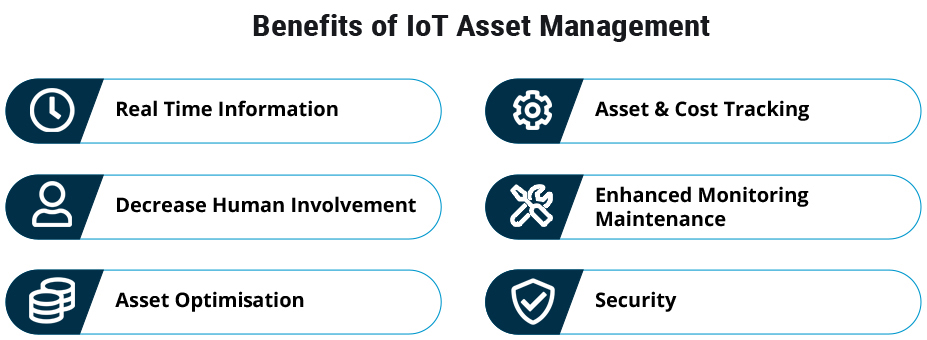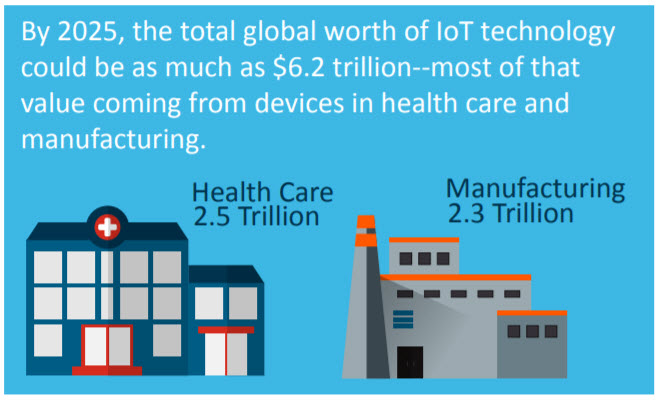With 2G and 3G sunsets already in progress, businesses need to get ready for the next generation of Low Power Wide Area (LPWAN) Technologies.
The IoT technology landscape is changing, with 4G and 5G cellular connectivity being deployed in more IoT devices than ever before. Connectivity is a crucial part of product design and performance, and the choice of connectivity technology must be considered early in the process.
As an IoT-enabler and solutions business, we design hardware with connectivity solutions ranging from low-frequency sensor networks to more sophisticated 5G-enabled networks. We tailor the right solution to meet your needs through final customisation, integrating other devices, connectivity, cloud services and user experience.
5G has the potential to change the way we do things.
Are you looking for a manufacturing partner to support your IoT technology roadmap and provide global manufacturing solutions?
Then keep reading...
This article covers how 5G will impact the Internet of Things (IoT), how OEMs can future-proof their products/digitalisation programmes with 5G, and more.
Chapters
Chapter 1
How Will 5G Impact the Internet of Things (IoT)?
IoT includes billions of network-connected sensors, cameras, wearable devices, vehicles, and more. The rate at which businesses are connecting through the Internet of Things technologies is rapidly increasing.
A new IDC (International Data Corporation) forecast estimates that there will be 41.6 billion connected IoT devices, or "things," generating 79.4 zettabytes (ZB) of data in 2025.
5G will play a role in providing exceptional voice and data communications. Supply chain management will benefit from data being transferred faster in real-time. 5G signals will be more reliable than older types of cell signals.
Various devices can share information to gain better data insights, which will enable data-driven decisions. For example, IoT solutions can manage energy, security, and lighting in a home or workplace.
Bill Menezes, Senior Principal Analyst at research firm Gartner, says
"The primary attributes of 5G include significantly faster data throughput; support for massive machine-type communications in which large numbers of machines or devices communicate without any human interaction or control; and ultra-reliable, low-latency communication." [source]
To reiterate, the reliability and low latency required for demanding IoT will be best served with 5G technology. Low latency is critical for OEMs as it supports their operations that require real-time access to fast-moving data.
Connectivity is a crucial part of product design and performance, and the choice of connectivity technology must be considered early in the process. 5G will build upon current wireless low-power standards like NB-IoT (Narrowband IoT) and LTE-M (LTE Cat-1) technologies. These existing technologies already offer extremely low-power data transmission, so 5G will improve this even further.
Two new technologies, both based on mobile (cellular) technology, are entering the market in the form of LTE-M and NB-loT - both created to be suitable for enabling global loT connectivity.
OEMs will need to choose the technology that will grow with new use cases. The application should evolve with time.
Chapter 2
How OEMs Can Future Proof Their Products/Digitalisation Programmes With 5G
As the market advances, IoT increasingly becomes the structure for enabling information exchange from people, processes, and technologies.
Carrie MacGillivray, Group Vice President & General Manager- Worldwide Telecom, Mobility & IoT at IDC, said...
"Data becomes the common denominator – as it is captured, processed, and used from the nearest and farthest edges of the network to create value for industries, governments, and individuals' lives. Understanding the amount of data created from the myriad of connected devices allows organizations and vendors to build solutions that can scale in this accelerating data-driven IoT market." [source]
Mobile IoT will help manufacturers achieve tangible results such as
- Improving efficiencies
- Eliminating unnecessary maintenance
- Reducing carbon footprint
- Enabling data-led business decisions
It will allow more significant production planning with a direct automatic contribution to operating margins.
The large-scale deployment of 5G will accelerate when IoT becomes embedded within enterprise and consumer applications, many of which are developed by small and medium-sized enterprises. [source]
5G applications will give several industries a large-scale boost.
As enterprises use 5G as a conduit to process and analyze more data, the business value is expected to be generated across a range of industries.
5G technology will be a game-changer for industries and create opportunities for those that get ahead of the curve.
Let's look at some of the opportunities for OEMs that lie ahead...
Chapter 3
5G Opportunities/Applications for OEMs
5G's speed advantage is one selling point, but its reliability and low latency are the highlights that will bring significant benefits that will open new opportunities.
The possibilities are endless, and the value chain will experience momentum and discover how to deliver its actual value.
TT Electronics can play a big part in bringing your IoT programmes to life with connected, scalable solutions that reduce research and development risk and get you to market fast.
Manufacturers are encouraged to seek new ways to remain competitive while meeting increased customer expectations and dealing with the global supply chain's complex nature. IoT technology is transforming traditional manufacturing supply chains into dynamic, interconnected data systems.
From the supply chains to the smart factory, businesses are using technology to help make data-driven decisions. Manufacturing supply chains must be adaptable and accommodating to the changing dynamics of new business requirements as they advance.
So, what are some of the applications we are looking towards and advancing?
Predictive Maintenance
Preventative and predictive maintenance are already changing how we think about maintaining, repairing, and upgrading equipment and facilities. Data captured by IoT devices will enable businesses to predict and plan for equipment failure before it happens.
According to a report by PwC, on average, predictive maintenance in factories could:
- Reduce costs by 12%
- Improve uptime by 9%
- Reduce safety, health, environmental, and quality risks by 14%
- Extend the lifetime of an ageing asset by 20%
Environmental Monitoring
With environmental monitoring, businesses can manage and minimise the impact the company has on the environment. In doing so, it will ensure compliance with regulations and mitigate any risks to human beings.
EM solutions continue to evolve with modern sensors and the Internet of Things. Data captured by IoT environmental monitoring sensors can analyze elements in a particular environment.
Smart Buildings
As the IoT industry matures, so does the ability to build more efficient "smart" buildings.
The Internet of things (IoT) has created a gateway that would help in managing and controlling elaborate buildings. These gateways are projected to exceed 64 million units this year, as per ABI Research.
IoT gateways connect devices within the Internet of Things to communicate valuable information between the devices and data.
Smart buildings, which connect building operations through IoT, simplify tasks such as controlling building temperature, security and maintenance through mobile devices and computers.
Some of the applications of IoT sensors that can be used include carbon dioxide monitoring, fire detection, HVAC observance, lighting control and more. IoT solutions will bring valuable insights to building facilitators.
Industrial Automation
The digital revolution in manufacturing has created new ways to monitor, connect, and interact with industrial processes in the world of industrial IoT.
It’s only natural that human interface machines will help further these advancements. HMIs have been and will continue to remain a critical part of manufacturing.
With 30 years of design and manufacturing expertise in HMI, TT Electronics specialises in providing HMI solutions and technologies for major OEMs in the transportation, aircraft interiors, medical and heavy industrial sectors.
Learn more about how Industrial IoT is impacting HMI designs in a previous article. You'll gain insights on types of IoT used in HMI designs, how HMI impacts IIoT, the benefits of HMI, how designing and manufacturing home devices based on HMI solutions improves users' daily lives, and more!
Asset Tracking
Asset tracking is crucial for businesses in practically every industry because it gains valuable business information, maximises operational efficiency and helps prevent theft and loss of assets.
Not done right, a business could face untimely stock issues (too little or too much, maintenance issues, or waste of resources.
These are benefits that organisations can take advantage of by implementing asset tracking.
- Variety of technology available like RFID tags, GPS, and barcode labels.
- Control of inventory movement
- Efficiency,
“Not only can users track which items are grouped together to create a more efficient system of filing, organisation, and reduce the time it takes to locate items, but they also have the ability to forecast better future inventory purchases based on the quantity needs easily found through barcodes, RFID, and GPS numbers,” according to Skuvault.
IoT-enabled asset management solutions can add elements such as predictive maintenance, top-down visibility into the status of assets, and real-time alerts into the picture through IoT sensors.

Source: Asset Infinity https://www.assetinfinity.com/blog/what-is-iot-and-how-is-it-helpful-in-asset-management
We provide an end-to-end framework that delivers hardware, connectivity, infrastructure and user experience solutions for seamlessly and securely connecting products and systems from device to data management.
At TT Electronics, our industrial IoT solutions enable OEMs to focus their resources wisely and develop IoT programmes quickly so that you can accelerate time to market.
Wearable Technology/Healthcare
Connected devices and wearable technologies are transforming the healthcare industry by enhancing patient care and impacting the efficiency and quality of care providers. The changing ecosystem will have significant impacts on the industry.

Most IoT smart devices aren't in your home or phone-- they are in factories, businesses and healthcare. Source: Where the Wireless Things are - and Why
Continued advances in electronics, optoelectronics, sensing components, wireless communication hardware, and battery technology will drive progress in this segment.
In summary
5G will cause explosive growth of IoT devices in the market.
The explosion of connected devices will depend on 5G and will present excellent opportunities for OEMs. Technology capabilities will improve overall business operations.
Mobile loT has blended hardware and software with the internet to build a more technically-driven environment. LTE-M and NB-IoT are adapted to provide cost-effective and reliable connectivity with a long lifespan.
At TT Electronics, we have an end-to-end IoT framework that seamlessly delivers hardware, connectivity, infrastructure and user experience solutions. Our speed to connect system enables customers to deploy IoT solutions faster, smarter and more cost-effective than going it alone.

